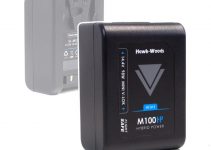One of the advantages of the digital revolution is that it made filmmaking accessible for many folks who were instead left out from the industry in the past. After all, there’s a limited number of people who can work in high-end, big-budget movies.
But nowadays it’s no huge deal to get a camera and a computer to edit. So many more filmmakers are jumping on board, and while that is wonderful, there are some downsides to this trend as well. For instance, many of us have skipped film school completely, while moving directly to on-set production. That means that we did skip the study of the basic rules, the so-called film-language.
The first place to start in this journey is to know the right camera angle to choose when shooting depending on the story you’re telling. However, if you’re one of those that need a quick recap, here’s Patrick Walbeck, ready to show us how to use some of the most used camera angles when filming.
#1 – Wide Shot
The wide shot is, as the name says, well, wide. It’s a shot usually introducing a new location, establishing the space where the action is happening so that the viewer can understand what is going on. It can have a dramatic effect if used to portray solitude and uncertainty placing the talent alone in a wide empty shop, or the exact opposite if he gets lost in a crowd.
#2 – Long Shot
The long-shot is somehow similar to the previous one but is usually showing us the character in its entirety, from head to toe. It can still be considered an establishing shot. Usually, it’s a shot with long telephoto lenses used from a distance.
#3 – Medium Shot
This shot focuses on the character and its actions referring to the purpose of the movement, and we start to get in the middle of things. This kind of shot creates a bond, a connection with the actor since it’s the shot that recalls more our interactions in real life.
#4 – Cowboy Shot
A middle ground between the medium shot and the long shot. It was born in western movies when directors needed to show the guns at the waist of the actors. It’s usually helpful to show some waist-level details, like said guns.
#5 – Tight (Close up)
As a rule, this is a shot you’ll see in a dialogue scene in a movie or a talking head in a documentary. It’s meant to bring you close emotionally to the action, to what is said at the moment. Better shot with a telephoto lens for better bokeh and less distortion on the subject’s face.
#6 – Detail (Extreme Close Up)
Used to highlight a specific detail in your scene. A great way to give rhythm while editing, or to draw the viewer’s attention to something that will later become important in the narration. Again, another shot that is made with tight lenses (50mm and above) or macro capable lens.
#7 – Low Angle
A character shown in a low angle will usually appear larger than life. This shot is empowering and shows the might of the subject. At the same time, if the subject is scaled-down and takes a small portion of the image, it becomes a tool to show wonder and majesty.
#8 – High Angle
As you probably have already imagined, the high angle has the completely opposite function of the low angle. A subject shot like this is frail and small, powerless, and vulnerable against the action happening.
#9 – Dutch Angle
It’s more of a position rather than a shot, but still, it’s worthy of being mentioned. Tilting the horizon just as if the world is collapsing aside is bound to communicate uneasiness and discomfort. Often it’s telling us that something is not right in the situation we’re watching on screen.
#10 – Over the shoulder
One of the most classical angles in cinema history. Almost all dialogue in the history of film has one of these shots. Basically, you frame the person talking but keeping it in front of the shoulder of the other person who is out of focus. It helps to establish the distance and position of the people talking.
#11 – POV
Point of view. That is quite self-explanatory: you shoot the image as if seen through the subject’s eye. It’s an immersive shot that puts us in the front seat and makes us experience directly what the subject is doing, thus empathizing more with him. Usually shot in wider angles.
#12 – Cutaway Shot
The cutaway shot is an intermission in the narrative that is taking place. It’s not really an angle since it can be almost any of the previous options, and is more of an editing choice. Ultimately, it’s a shot that breaks the flow and allows us to move between two different timelines or between two different locations where the action is taking place.
So, those were the most important camera angles to keep in mind. Watch out, though, don’t get carried away. What sets apart a great filmmaker and director is knowing when to use one angle instead of another.
That is something you can learn from books or experience, but always ask yourself while shooting: “Am I adding something to my narrative with this shot?”. If the answer is yes, then go for it!
[source: Patrick Walbeck]
Disclaimer: As an Amazon Associate partner and participant in B&H and Adorama Affiliate programmes, we earn a small comission from each purchase made through the affiliate links listed above at no additional cost to you.


